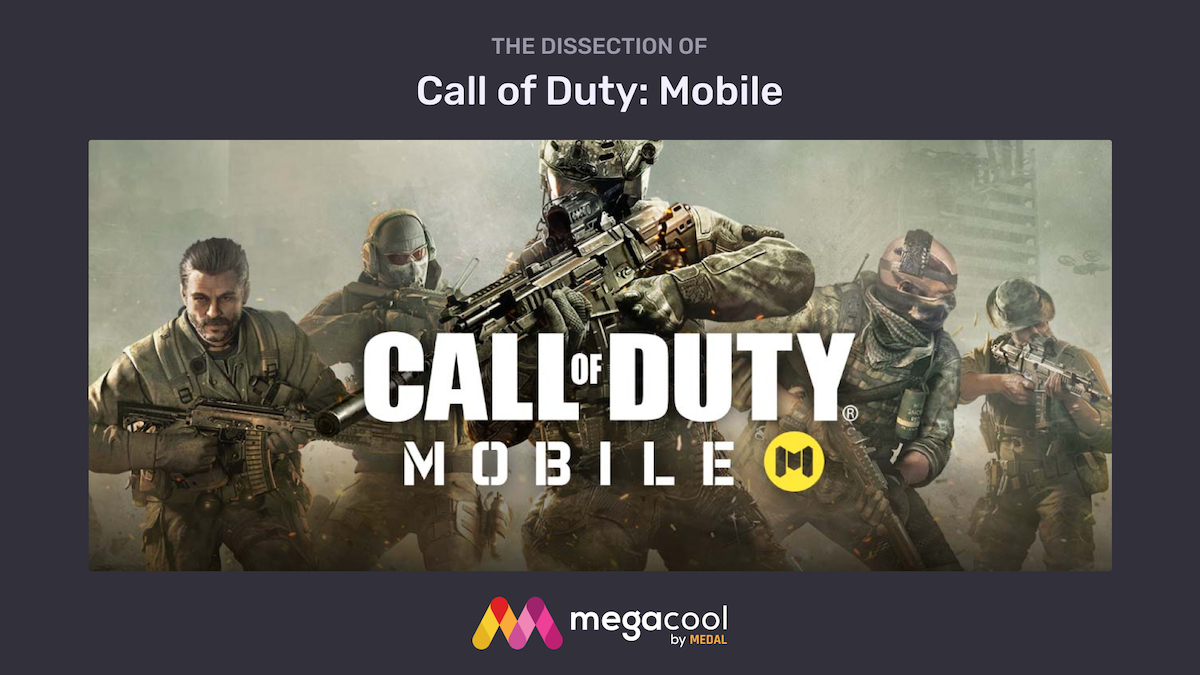In 2019, Activision added a mobile counterpart to its successful Call of Duty franchise. It was, unsurprisingly, a massive hit, with 100m downloads within its first month.
So what have Activision done to translate a PC and console First Person Shooter into a successful mobile title? In this game dissection, we’ll explore how Call of Duty: Mobile was able to hit those immense download numbers, starting with a look at its App Store listing and right through to its social features.
At the same time, there are some areas that we think Call of Duty: Mobile could improve on, which we’ve laid out below.
What you can learn from Call of Duty: Mobile
When it comes to mobile game development, Activision – and Tencent – are some of the biggest players in the global market. As a result, there’s plenty we can learn from Call of Duty: Mobile that can be applied to other mobile games to boost their engagement, retention and monetization.
1. Hand-holding through complex mechanics
While Call of Duty: Mobile leverages the popularity of a huge franchise, this is still an amazing achievement for a game that traditionally relies on quick reflexes and precision aiming – neither of which are easy to port from controller, or keyboard and mouse, to touchscreen. Call of Duty presents multiple control methods as part of its tutorial, giving players the chance to try them out and pick one they’re more comfortable with. It’s also easy to change control methods on the fly during a game.
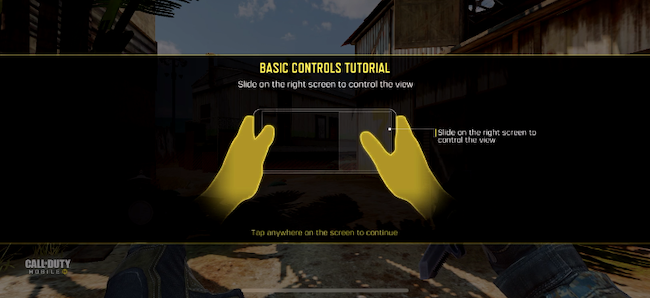
Secondly, while the tutorial is quite lengthy, Call of Duty holds the player’s hand to guide them through the various options and mechanics. Inventory management is a core component of the gameplay, so this is introduced gradually rather than throwing players in at the deep end and overwhelming them with options.
2. “Advanced” modes are kept gated during onboarding
Call of Duty: Mobile comes with three game modes: Multiplayer, Zombies, and Battle Royale. The latter two are gated off until the player has reached a certain level, which they achieve via playing Multiplayer which is the more “vanilla” of the game modes.
By the time a player unlocks Zombies and Battle Royale, they should have a good grasp of the game mechanics (as well as enough skill to enjoy the more advanced modes, rather than floundering and having a poor experience!). Not only does this help the player to have a more structured First-Time User Experience (FTUE), it also hints at further layers of gameplay that acts as something for the player to aim for over the longer term.
3. Great copy increases immersion
It may seem like a small thing, but simple choices like calling the tutorial “bootcamp” make a big difference when it comes to immersion and player retention. This level of added detail helps with world-building, by making the player feel like they’ve gone through a military-style training course rather than simply tapping through a tutorial.
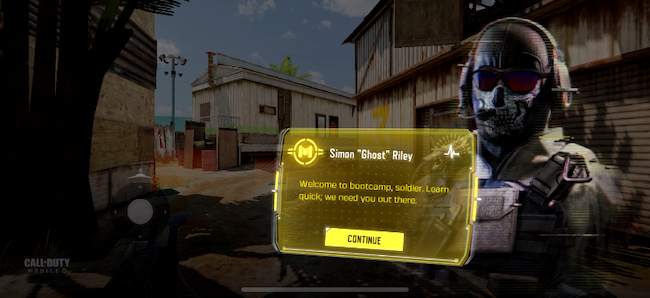
We’ve written before about the difference great copy can make to games, and this is a classic example of how a little extra polish can add some value for the player. This effect is amplified by having these tutorial messages delivered by an in-game character, rather than simply being disembodied text boxes.
4. Encourage customization and pride in ownership to boost monetization and retention
Call of Duty: Mobile – like its PC and console equivalent – places a lot of emphasis on unlocking, upgrading, customizing and personalizing items. There’s a vast array of weapons, each with multiple attachments that affect their performance in subtle but meaningful ways, allowing for different playstyles. A huge part of the Call of Duty multiplayer experience is tweaking your weapon choices
Call of Duty: Mobile encourages players to take pride in their personalization, by making the weapons highly visible in menus and allowing you to manually inspect your loadout choices. This places an extra feeling of “ownership” over these items, as you can manipulate them in-game in a physical way. That sense of pride can lead to great retention and monetization, as players either work to unlock more items, or spend to acquire them.
What Call of Duty: Mobile can improve
While Activision’s mobile spin-off of the Call of Duty franchise is clearly a huge success, there are a few areas in which it could improve the player experience and potentially grow its audience even further. Let’s take a look.
1. Video and GIF sharing of “Killcam” or “Play of the Game”
Each round of Call of Duty: Mobile ends with a “Final Killcam”, where every player gets to see the final kill of the round from the perspective of the player who pulled it off. However, the game does not allow players to share or save this moment with their friends. In fact, currently Call of Duty lets you share a screenshot of the “winners’ circle” (see below) and nothing more.
This is a huge missed opportunity. The Final Killcam is the moment of triumph or despair, and is presented in slow motion as the winning moment of the game. It’s short – just a few seconds – making it the perfect length for a GIF or a looping Twitter video.
This could be taken a step further by allowing each player to view (and share) their own personal highlight from the game, much like Overwatch’s “Play of the Game” mechanic. The Final Killcam is a slightly arbitrary highlight, and frequently there isn’t anything particularly special about it compared to a great play that might have taken place earlier in the game.
Allowing players to view, capture and share these moments would make for highly-engaging social content that could potentially pull in more players.
Juju está el vicio acá¡Ven y juega junto conmigo!https://t.co/aDqLZalOKP pic.twitter.com/mOjERIGsvN
— Joel (@JoelAcevedoo) December 8, 2019
2. Expand the existing sharing process
The current social sharing experience in Call of Duty: Mobile is actually quite prosaic, and could be significantly improved to boost its effectiveness. Players can take a screenshot of the “winners’ circle” (like an Olympic podium) and then either save it to their device, or share to Facebook.
There’s multiple factors that could be improved here, such as:
– Allow sharing to more social platforms: Twitter, Instagram, and messaging apps
– Provide pre-written text to go with the share: at the moment, the player has to enter their own text, which increases the likelihood that they’ll simply leave it blank rather than having an engaging message
– Incentivize new players to join via sharing: for example, in-game currency could be given to new players who sign up via a shared link
– Use deep-linking to allow friends to team up seamlessly: players could join clans or jump straight into a game with their friends using deep-linking
– Allow more opportunities to share: Call of Duty: Mobile is packed with shareable moments, from Killcams to victory dances and case openings. The game already lets players examine their weapons – why not let them show these off on social media too, and encourage other players to do the same?
Open CSGO cases on your phone! Use this link and receive extra cases #caseopener #csgo https://t.co/AY6z0AUvhk pic.twitter.com/fHzsyyvG5D
— Tmen31 (@tmen31) December 6, 2019
3. Broaden the Invite Friends experience
Call of Duty: Mobile allows players to invite their friends via Facebook only, which again is something of a missed opportunity (you can login using Line too, but not invite through the platform). Not only would it be preferable to leverage more social / messaging networks, but the existing integration is lacking in some of the personalization that would improve its effectiveness.
As it stands, players simply choose friends from their Facebook friends list, and ping them a notification. There’s no option to add a personal message, it just appears as a Facebook notification. Tapping the notification opens the app itself, which puts you in a lobby with the inviting player. This is a nice touch, but the actual invite could be much more appealing.
One thing Call of Duty: Mobile does do is incentivize playing with friends by giving +5% XP for doing so, which is a nice touch that is likely to hook some players without creating too large an advantage for those that do so.
4. Simplify the onboarding experience
A first-time player gets hit immediately with a wealth of information that will be either irrelevant – or even meaningless – to them at that stage of the user journey.
A lengthy pop-up details bug fixes, tweaks and new features, and is packed with terminology that players will not yet be familiar with. After closing this, the new player also gets hit with pop-ups for in-game items and content, which can be off-putting at best and overwhelming at worst. Simply put, there’s no need for a new player to encounter these kinds of messages at this stage, and it may be better for them to be held until further along the FTUE.
Finally, one of the first things players are asked to do is create a username. Unfortunately, no indication is given as to whether the name they choose is taken, until a player has submitted it – at which point players are told to choose something else.
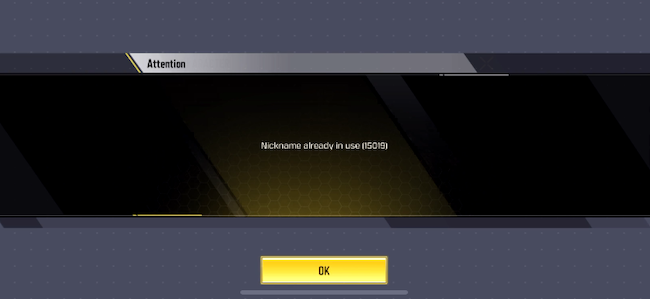
A far better experience here would be to suggest a selection of similar names – for example, with a string of numbers on the end – that a player can quickly choose from. As it stands, players might go through multiple attempts to find a unique username before finally hitting one that works.
Games such as Hearthstone – another Activision property – simply add a random string of numbers to your username by default, allowing players to not only use their preferred username, but to do so quickly and easily.
5. Adding rewarded referrals: Incentivizing growth through players
Call of Duty: Mobile currently misses a big opportunity to grow its game via rewarded referrals. Doing so would allow it to boost its audience organically, by leveraging the social power of its community.
A referral could take place by allowing a player to share a customizable message to their social channels or messaging apps, inviting their friends to join the game. We touched on this in point 3, but Activision could take this an extra step by incentivizing these referrals with rewards.
Rewards could take the form of in-game items (like weapon skins or emotes) or currency. They could even be exclusive items that can only be obtained by referring new players to the game, making them highly desirable and increasing the chance of a share.
For even more information on how Call of Duty: Mobile – and other games! – can take advantage of incentivized referrals, check out our blog post.
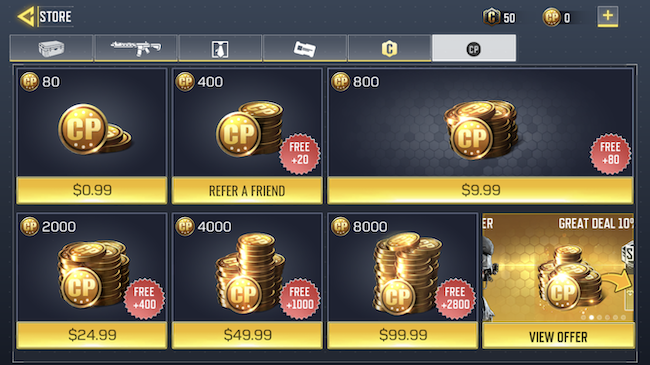
Other game dissections
If you enjoyed this game dissection, why not take a look at some of our others? We’ve taken deep dives into some of the biggest mobile games in recent years, to see what made them successful and what (if anything) they could do better:
- Agar.io
- Angry Birds 2
- Bowmasters
- Bumper.io
- Candy Crush Soda Saga
- Crossy Road
- Love Balls
- Trivia Crack 2
Thanks for reading and watching! If you want to know about Megacool, our products and our insight into gaming growth, please get in touch – we’d love to hear from you: hello [at] megacool.co!

